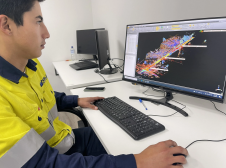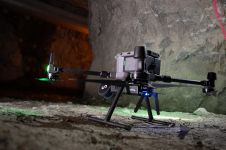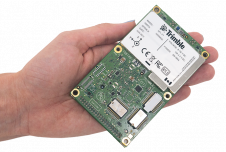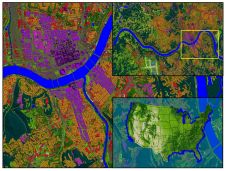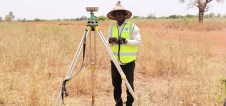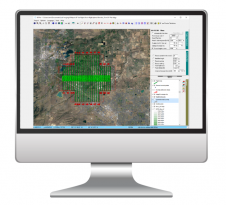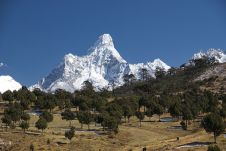印度GPS地震研究计划
Permanent, Semi-permanent and Campaign-mode GPS Network
In 1998 the Government of India Department of Science & Technology (DST) launched a National GPS Programme for Earthquake Hazard Assessment. The recent major earthquakes in the South East Asian region, and damage caused by the 2004 Tsunami, have demonstrated once again the importance of such a programme. This now includes a network of permanent, semi-permanent and campaign-mode GPS stations, today at an advanced stage of implementation.
The Himalayan region is seismically active and needs monitoring for earthquake hazard. Further, the Peninsular Shield of India can no longer be considered to be seismically inactive, as shown by the Koyna, Latur and Jabalpur earthquakes.
Programme Focus
1993年拉特拉斯地震后,联合国专家委员会建议建立浓稠的GPS和该地区的精确垂直控制,以监测地震活动。1998年,科技系(DST)通过Laun-Ching为地球动力学计划的广泛的国家GPS制定了上述建议。一个国家委员会,旨在监督2005年2月(DST,2005年DST,参见进一步阅读)的计划。整个网络将包括43个永久性GPS站,大约七百个半永久(竞选模式)GPS站,在喜马拉雅地区和印度的半岛盾牌中,以及建立和监测当地竞选的更多现场GPS站。该计划专注于以下问题:
- determination of strain fields around different tectonic blocks in areas such as Bhuj, Son Narmada Lineament, North Western and Eastern part of Himalaya, the Khandwa region of Madhya Pradesh, the Ongole area of Andhra Pradesh, and the Great Boundary fault
- stability of the South Indian Peninsula
- crustal deformation studies along major shear zones
- motion and active deformation of India
- geodynamic behaviour of Himalaya
- crustal deformation studies along Eastern and Western Ghat regions
- 新推点运动,有源故障,山体滑坡等研究
- quantitative geomorphology
- 电离层模型
- manpower development in GPS technology, SAR Interferometry and Terrain Modelling using Airborne Lidar.
Campaigns
永久的GPS站现在已经在这rty locations all over the country. Five are presently under construction, whilst eight are proposed for completion in 2006. In order to estimate regional crustal strains, and to identify and monitor seismically active regions, a network of about 700 semi-permanent GPS Stations is being set up. This covers the entire country, and the spacing between stations is about 40km to 60km. As far as possible, existing stations of the Great Trigonometrical (GT) Triangulation Network of India are included in the network. To study the local crustal deformation process in seismically active areas, campaign-mode studies have been taken up by various participating institutes in eleven areas distributed over the whole of India. A National GPS Data Centre has been established at Survey of India, Dehradun. All the GPS data from permanent, semi-permanent and campaign-mode GPS stations is transmitted to this Data Centre, either in real time via the internet or VSAT-connectivity, or, where a real-time data link is yet to be established, periodically by off-line modes. The data is stored, managed and disseminated to the user community from this Data Centre for further processing.
Concluding Remarks
The National GPS Programme for the Earthquake Hazard Assessment programme will continue to contribute significantly to our understanding of plate motion and crustal deformation in the region. The programme will also contribute to the development of models for earthquake-hazard assessment.
进一步的再保险ading
- DST,1998年,关于全国GPS和大地测量研究计划,GPS,科技系GPS专家组,GOVT。印度。
- DST (2005) Brochure (Revised) on the National Programme on GPS for Earthquake Hazard Assessment, edited by M. N. Kulkarni, Department of Science & Technology, Govt. of India, January, 2005, also available at: www.civil.iitb.ac.in/~kulkarni/DSTBroFinal.pdf.
- Kulkarni, M. N., 2000, Earthquake Monitoring & Other GPS Applications, GIM International, Oct. 2000, Vol.14, pp 23-25.
- Kulkarni, M. N., S. Likhar, V.S. Tomar, P. Pillai, 2004, Estimating The Post-Earthquake Crustal Deformations in Gujarat Region of India Using The Global Positioning System, Survey Review, International Journal of Surveying, vol. 37, No. 292, pp 490-497, January.
- Kulkarni, M.N., D. Rai, P. Pillai, VS Tomar, 2004, Establishment of a GPS permanent ref. station at Dept. of Civil ENgg., IIT Bombay, India, Acta Geodetica Geophysica, Journal of Hungarian Academy of Sciences, Vol. 39(1), pp 55-59.
Make your inbox more interesting.Add some geo.
Keep abreast of news, developments and technological advancement in the geomatics industry.
Sign up for free




